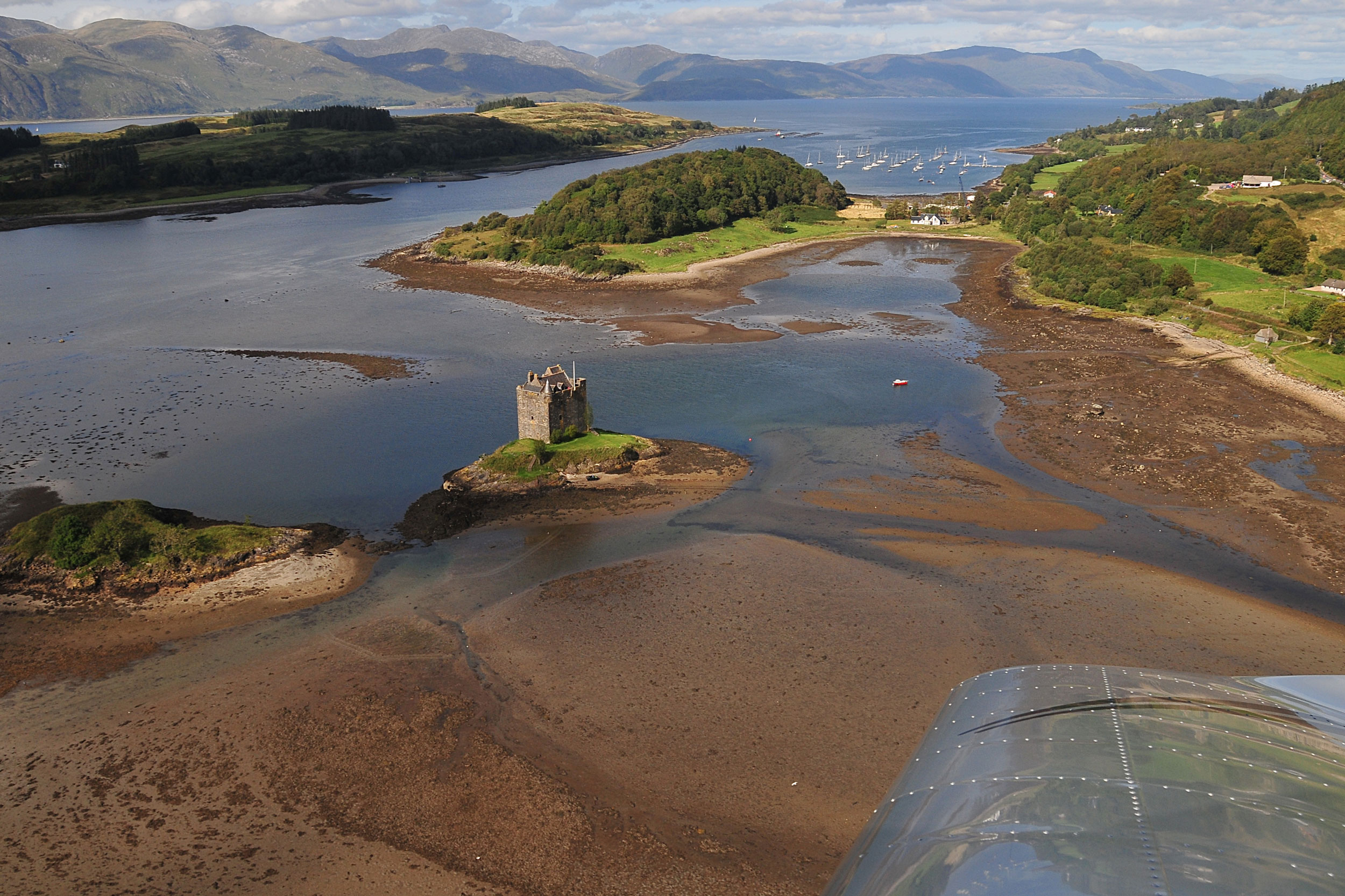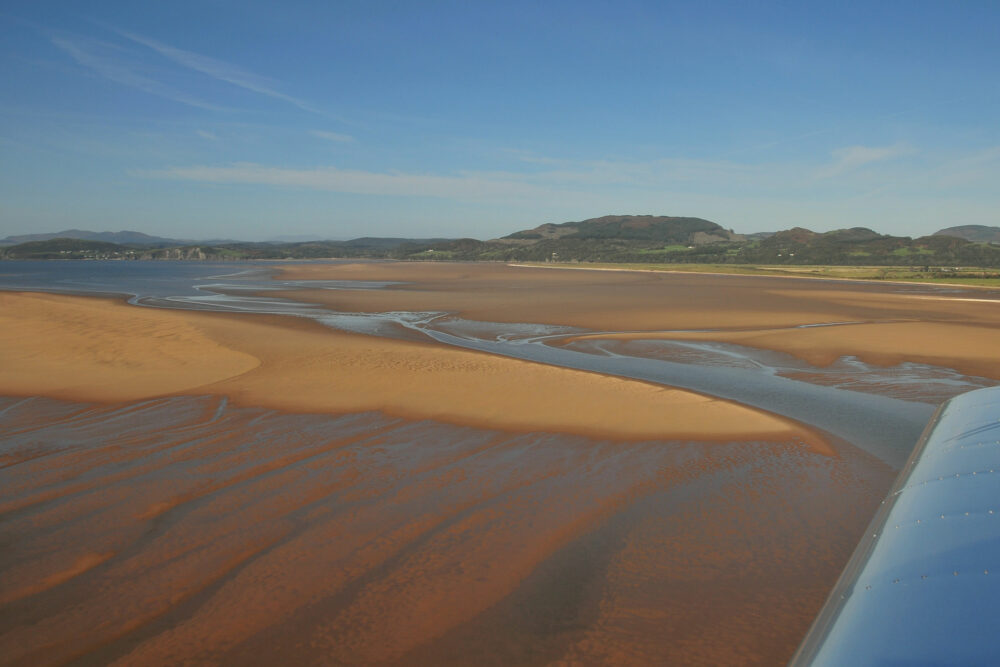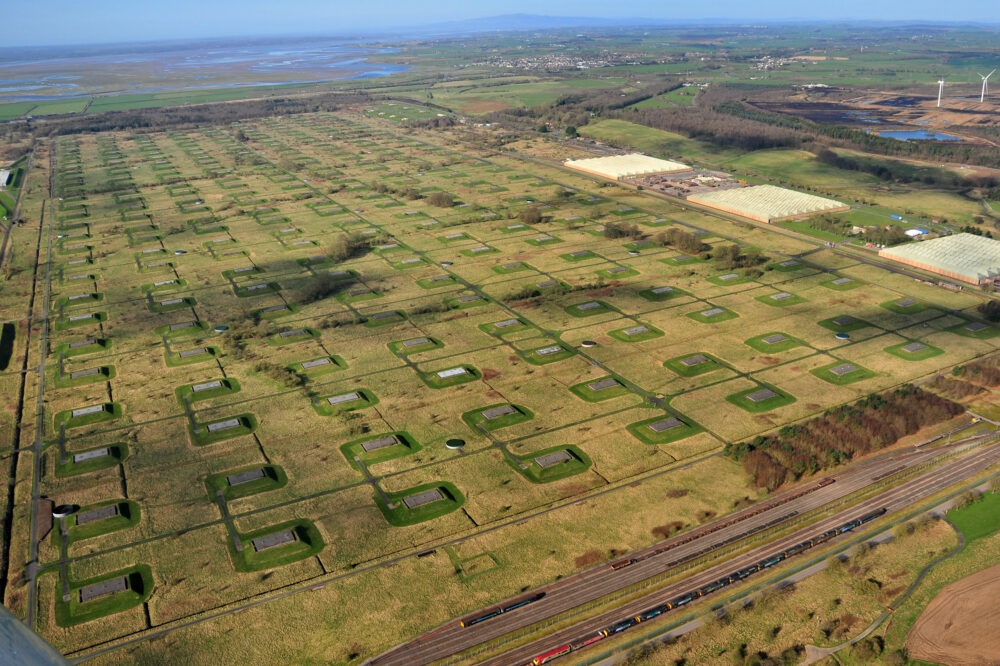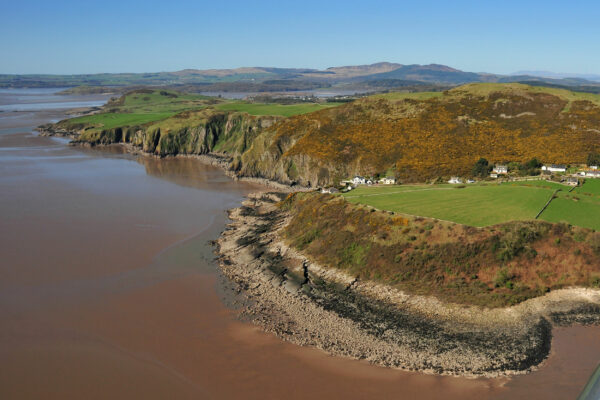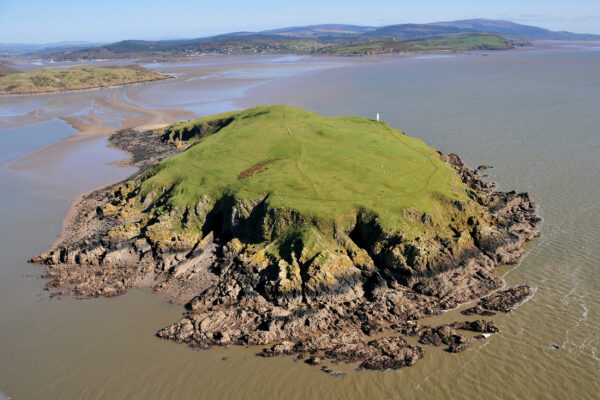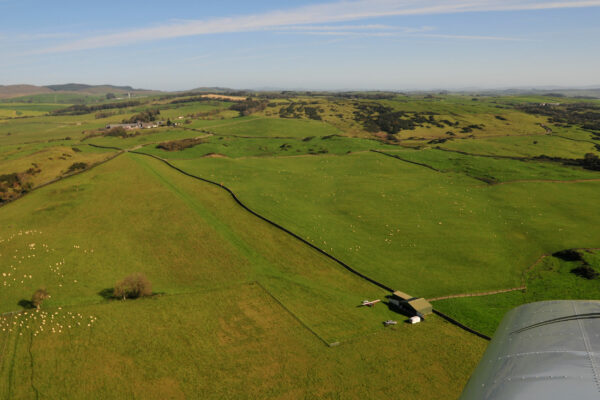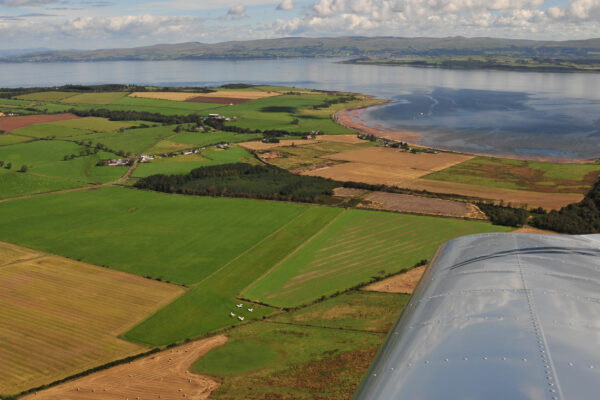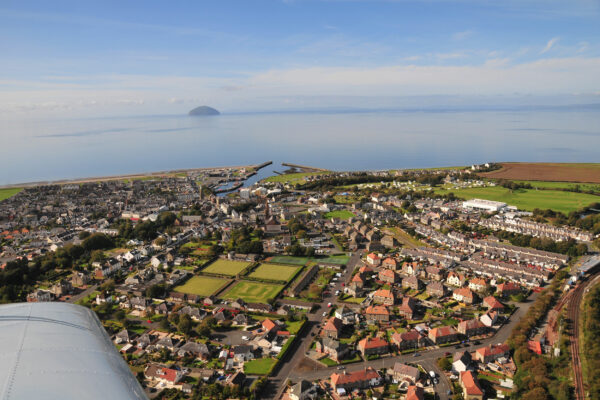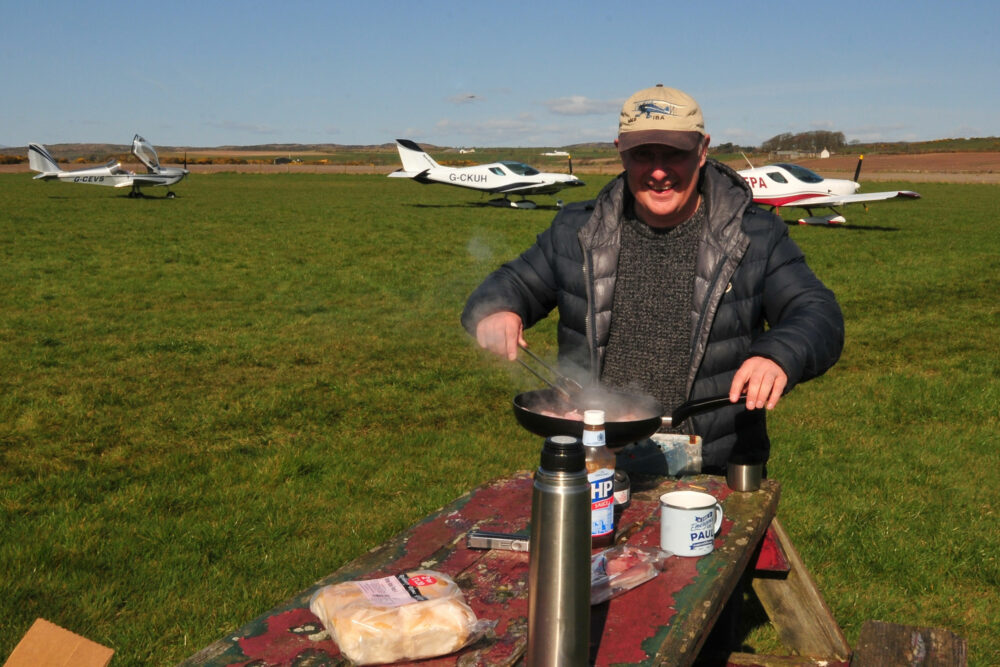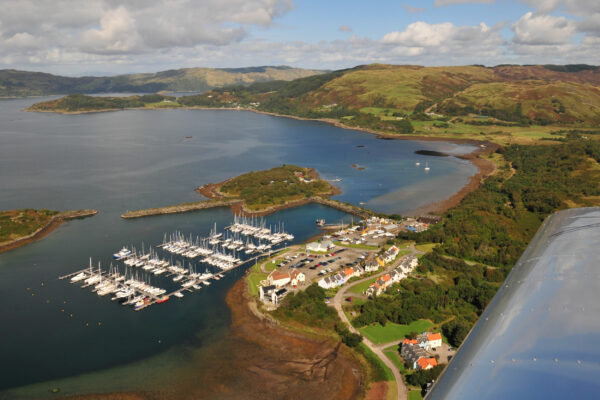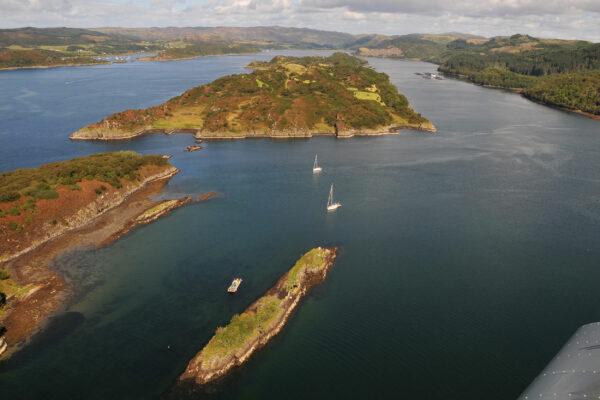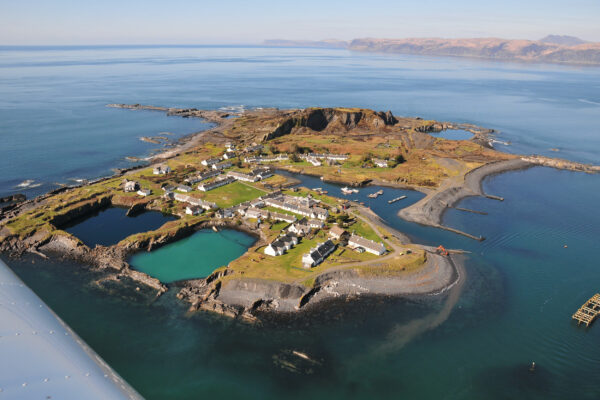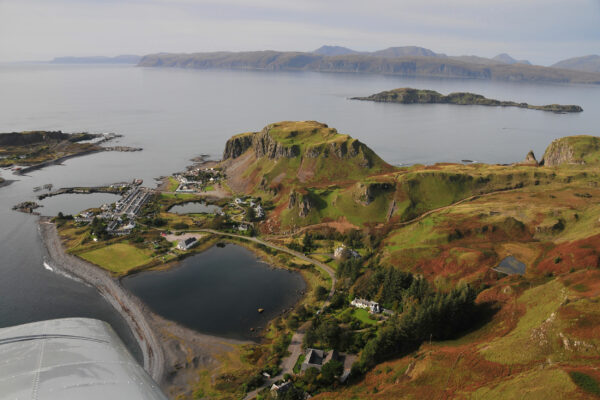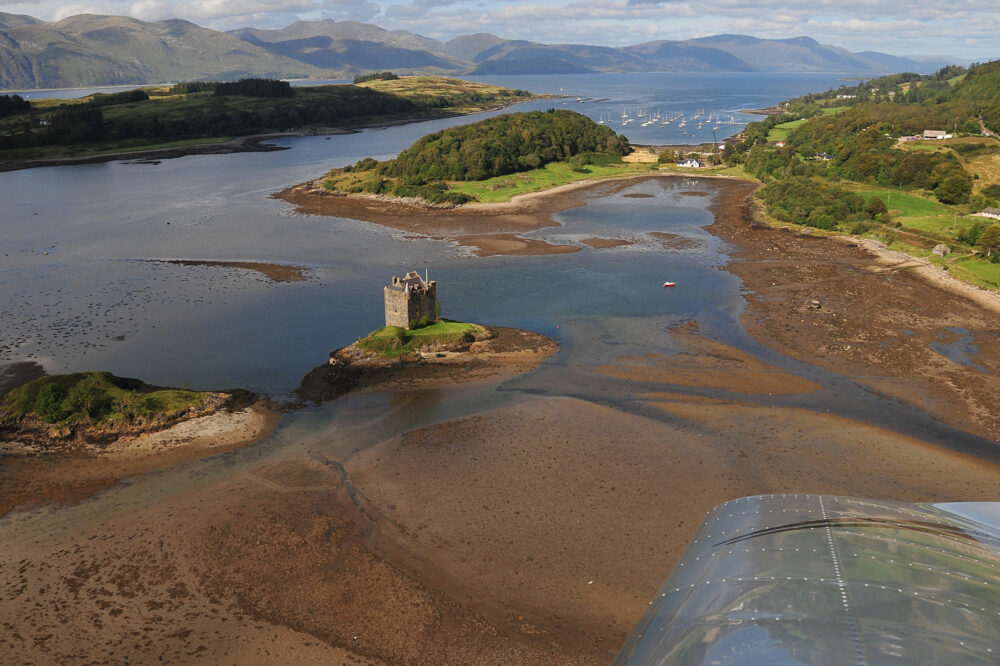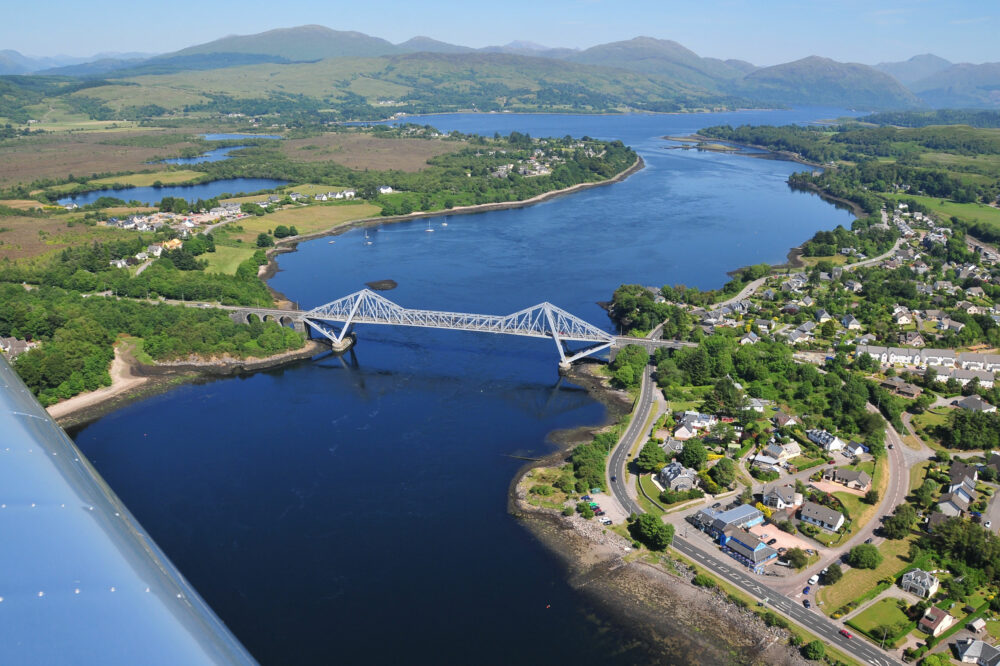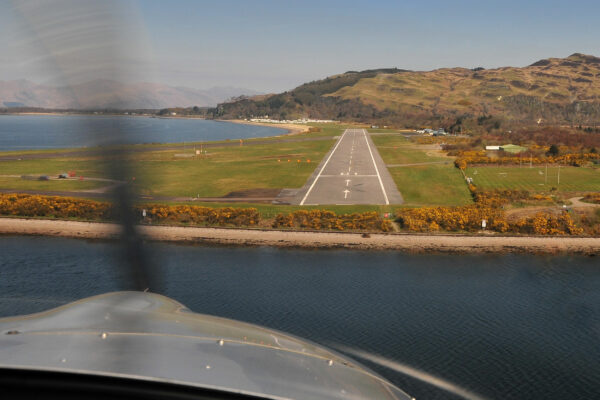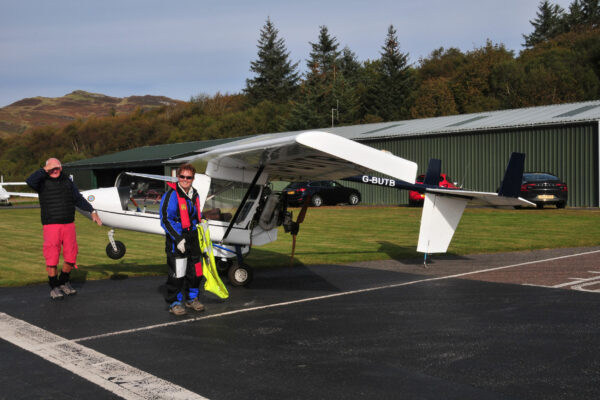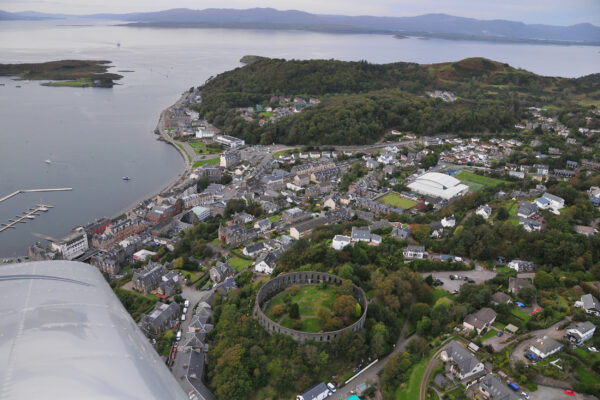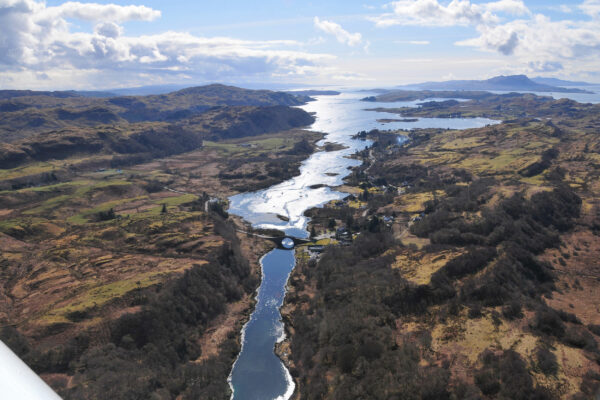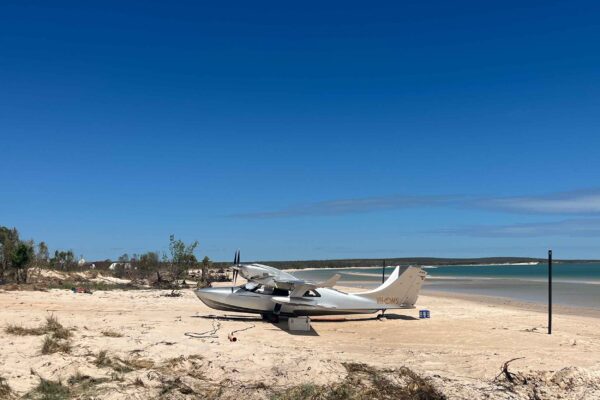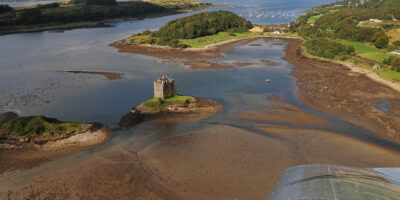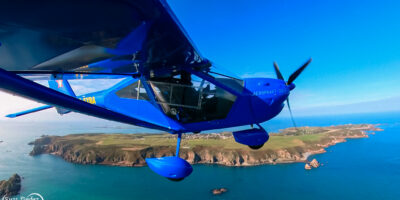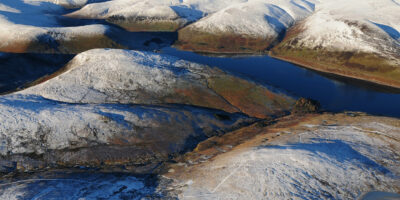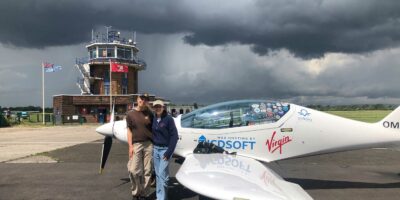Crossing the M6 in loose formation, we enter Scotland at Gretna Green, famous for its runaway marriages. Indeed, we fly over the blacksmith’s shop where the tradition started in the 18th century when the ‘Anvil Priest’ would marry young couples keen to escape the new 1754 Marriage Act in England and Wales which required couples under 21 to have parental consent.
The northern coastline of the Solway Firth is a fantastic place to fly with large sandbanks and mud flats and scenic islands and villages. The only real hazard for the low-level pilot are large flocks of birds, particularly in the Caerlaverock mudflat nature reserve at the River Nith estuary south of Dumfries, which is the destination for some 38,000 Svalbard barnacle geese that migrate the 2,000 miles down from Spitsbergen every winter.
We pass the impressive, square Southerness lighthouse which dates to 1749 and is the second oldest surviving lighthouse in Scotland. Here, the inland peaks north of the Solway rise to over 2,000ft and would pose a risk of severe turbulence at our low-level in a stiff northerly wind but today winds aloft are light, and it’s wonderfully smooth.
An ‘ugly’ aerial ‘no-no’…
A little further on is pretty Kippford in the estuary of the River Urr which is popular with yachters. Nearby Hestan Island is one of 43 tidal islands that can be walked to in the UK and for me, has the further distinction of hosting the only ‘ugly lighthouse’ I’ve ever seen – the skeletal structure looks like a giant abandoned packing case on its side. It is truly awful so I’ll give it just one star on my ‘aerial tour trip advisor’!
As we approached Lennox Plunton, we spied Robert Sproat airborne in his Piper L-4H Cub, G-COPS, which has been in the family since 1983. After a brief (and slow!) chase around the patch, we followed him to land in turn on the 460m north-south strip.
We received an exceptionally warm welcome from Robert who instantly produced socially distanced brews and biscuits from the obligatory strip caravan. We enjoyed a really good chat with Robert who revealed his late dad, William, created the strip in 1961.
Robert’s 1944 Cub is a typical US war surplus L-4, which ended up being registered in France in 1950 and was resident at Albertville for many years. In the late 1970s it became one of the many French vintage aircraft imported into the UK, where they went on to provide cheap, fun flying on a PFA (now LAA) Permit.
With a full day ahead, we couldn’t hang around and reluctantly rose from the comfort of our deckchairs, thanked our generous host and departed for Castle Kennedy, 20 minutes to the west. Crossing the top of Wigtown Bay, we passed the former Wigtown Airfield which, though still marked on SkyDemon, hasn’t been active for many years now.
Castle Kennedy, just east of Stranraer, is a former RAF Airfield operated by Stair Estates with about 600m x 20m of really good re-surfaced tarmac available within the original R26/08.
I’d PPR’d on the airfield website with the ever-hospitable Lord Stair (Jamie), but the need for a good look-out at unmanned airfield was highlighted when a magnificent stag with huge antlers wandered across the runway as I was on short finals.
I was just about to go-around when he ran off into an adjacent field at speed leaving me clear – you’ve got to love flying in Scotland!
Interestingly, Jamie’s uncle, Andrew Dalrymple, was co-founder of the famous Chilton aircraft company who produced four magnificent DW.1 very fast (112mph on 32hp / 126mph on 44hp!) sporting monoplanes just before the outbreak of WWII.
Tragically, Andrew was killed in December 1945 at Chilton’s base at Hungerford along with the company test pilot in the crash of a Fieseler Storch which the test pilot had ‘acquired’ in the American sector during a trip to investigate German aviation technology.
Fortunately, all four original Chiltons survive, whilst in the UK we also have a number of beautiful modern reproductions, including three Mikron-powered examples.


